
Yásnaya Elena Aguilar Gil (Ayutla Mixe, 1981) is part of COLMIX, a group of young Mixe people dedicated to researching, communicating and promulgating Mixe language, history and culture. She studied Hispanic Language and Literatures and received a Masters in Linguistics at The National Autonomous University of Mexico. She has collaborated in various projects around linguistic diversity, the development of grammar content for educational materials in indigenous languages, and projects documenting languages at risk of disappearance. She has helped develop written materials in Mixe and as well as growing readerships in Mixe and other indigenous languages. As an activist she has defended the linguistic rights of speakers of indigenous languages, and the use of indigenous languages online and in literary translation.
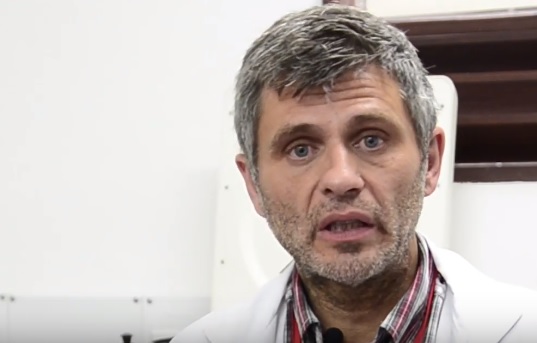
Francisco Javier Aceituno (Ph.D, Complutense University, Spain) is a Spanish archaeologist who works in Colombia. He is currently full professor in the Department of Anthropology at the University of Antioquia (Colombia). His research focuses on the study of the origins of agriculture in the Neotropics, as well as on the archaeobotany and lithic technologies related to the early peopling of Colombia. He has published in peer-reviewed journals such as Quaternary Science Review, Quaternary International, Journal of Anthropological Archaeology, Environmental Archaeology and World Archaeology. He has participated in projects funded by the European Research Council and National Science Foundation.
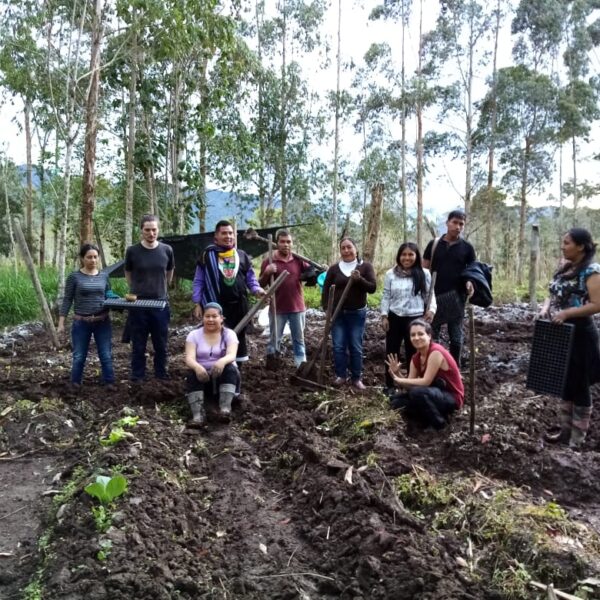
Jully Acuña Suárez: Artist and Ph.D. Researcher, Faculty of Archaeology, Leiden University. BA in Visual Arts, Pre-MA in Photography and Media, MA in Heritage Studies
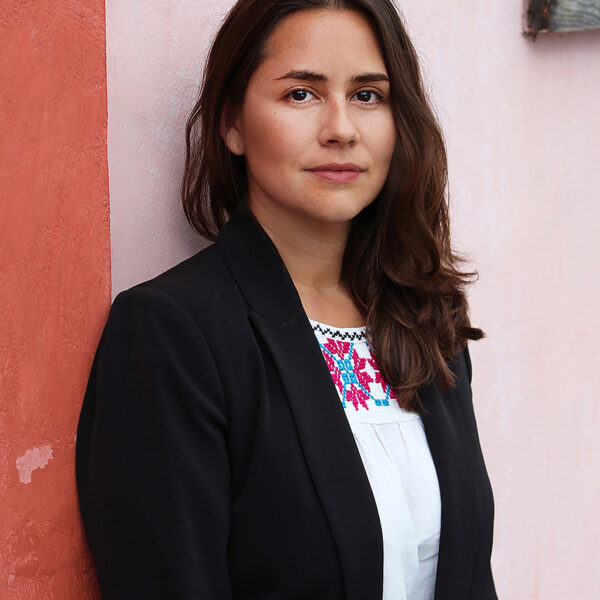
Lorena Ancona (Chetumal, Q. Roo, 1981) Studied at the National Academy of Visual Arts ENPEG “La Esmeralda”, Mexico City and the National School of Decorative Arts ENSAD Paris, France. Lorena Ancona is a visual artist who works with sculpture, ceramics and weaving through the exploration of the history of Mesoamerican dyes, pigments, materials and places. Her work is the result of a research-based practice that questions intangible displacements from forgotten traditions, heritage and identities. Using experimental techniques as an artistic methodology her works seeks to build knowledge through the analysis and identification of minerals in their ethnic bio-cultural surroundings. Recent projects have taken a particular interest in the archaeological contexts and technological evidence of a synthetic organo–mineral (clay) pigment known as Maya blue. Lorena’s research is part of an extended narrative in which the artistic gesture can give form to potential representations and stories, which in turn reintroduce forgotten materialities that would otherwise be lost.
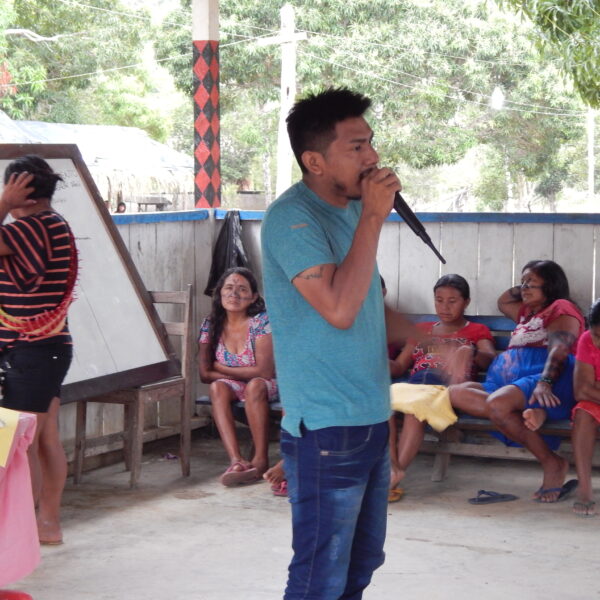
I am Jair Boro Munduruku and I come from the village Caroçal Rio das Tropas, which is on the Tropas river, a tributary of the Upper Tapajós river. I am currently completing my undergraduate degree in archaeology at the Universidade Federal do Oeste do Pará in Santarém. Archaeology has given me a way to return to my origins, and to value the history and culture of my people. I hope my work can be useful in our struggle for Indigenous rights.

Gabriela Cabezón Cámara (Buenos Aires, 1968). While practised in several different trades, – from selling car insurance on the street, to designing newspaper layouts – the most relevant here are cultural journalism and teaching – for want of a better word – creative writing. She currently runs the Laboratorio de Experimentación de Artes de la Escritura at the National University of the Arts in Buenos Aires. She has always been involved in activism and militancy, and today the plight that most preoccupies her is resistance to the Capitalocene: the struggle to protect all living things. Her novels and novellas include La Virgen Cabeza, Le viste la cara a dios, Romance de la Negra Rubia and Las aventuras de la China Iron. The English translation of the latter, The Adventures of China Iron, was shortlisted for the 2020 International Booker Prize. The French translation was shortlisted for the 2021 Foreign Language Prix Medicis. Her work has been translated into English, French, Norwegian, Portuguese and Italian, and Turkish, Greek, Lithuanian, Slovenian and Croatian editions of her books are forthcoming.
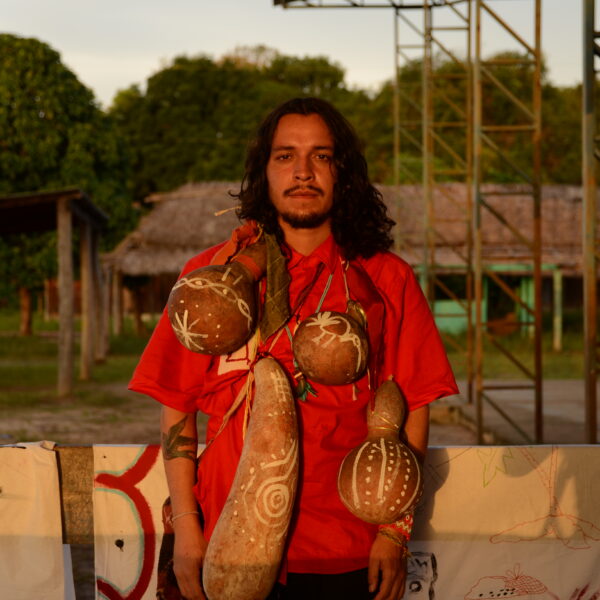
Gustavo Caboco is a Wapichana visual artist from Brazil who works in the Paraná-Roraima network and in the paths of return to the land. His production with drawing-document, painting, text, embroidery, animation and performance proposes ways to reflect on the displacements of indigenous bodies and on the production and resumption of memory. Caboco participated in the 34th São Paulo Biennale (2021). His project with SDCELAR alongside Wapichana historian Roseane Cadete, ‘Atelie Lavrado’, is based around a collection of Wapichana objects at the British Museum, with a particular focus on materials related to traditional weaving practices that are relevant for living communities in Brazil.

Juan Cárdenas (Popayán, Colombia, 1978) is the author of the novels Zumbido (451 Editores, 2010 / Periférica, 2017), Los estratos (Periférica, 2013), Ornamento (Periférica, 2015), Tú y yo, una novelita rusa (Cajón de sastre, 2016), El diablo de las provincias (Periférica, 2017) and Elástico de sombra (Sexto Piso, 2019). He also wrote the book of short stories Volver a comer del árbol de la ciencia (Tusquets, 2018). He is currently a teacher and researcher on the Creative Writing Masters Programme at The Caro and Cuervo Institute, Bogotá.
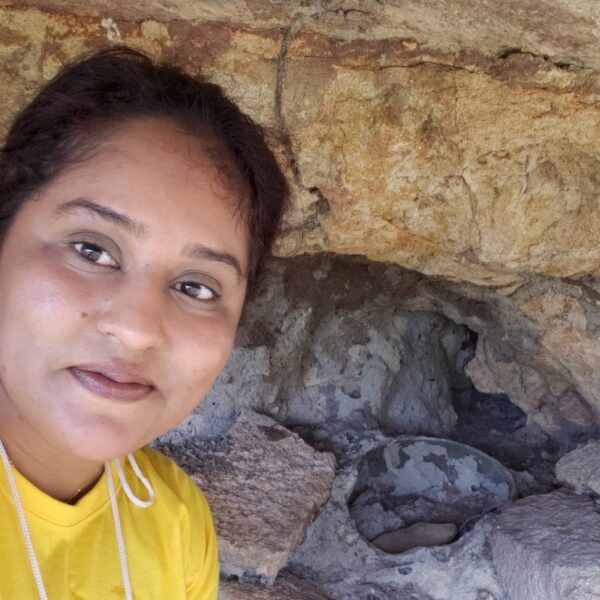
Louisa Daggers is a researcher and coordinator of the Amerindian Research Unit, Department of Language and Cultural Studies, University of Guyana. She is author of several journal articles, monographs and technical reports published in both national and international journals and magazines. Daggers is currently an associate researcher of the Santa Domingo Center of Excellence, and serves as Editor of the Journal of Archaeology and Anthropology. Her research is focused on investigating the dynamics of shell midden occupation along the coastal zone of Guyana working in collaboration with Professor. Mark G. Plew of Boise State University. Her more recent research attempts to reconstruct Holocene environmental change, through the use of carbon and Oxygen Isotopic analysis of human and faunal remains of shell midden populations along the North Western Coast of Guyana. Recognizing the need for legislative framework to manage cultural and archaeological heritage she Is also extensively involved in site documentation, assessments and management working closely with indigenous communities to promote conservation and management of cultural resources.

Carlos Fonseca (Costa Rica, 1987) is the author of the novels Coronel Lágrimas (Anagrama, 2015) and Museo Animal (Anagrama, 2017), as well as the essay La lucidez del miope (Germinal, 2017), which won the National Prize for Literature in Costa Rica. In 2016 he was selected by the Guadalajara Book Fair as one of the twenty most promising Latin American authors born in the eighties. In 2017, he was selected on the Bogotá-39 list, comprising thirty-nine of the most promising writers under forty in Latin America. In 2020 he was selected as part of the Granta list naming the twenty-five best writers in the Spanish language. His latest novel, Austral, will be published by Anagrama in 2022. He is a professor and fellow at Trinity College, Cambridge University.
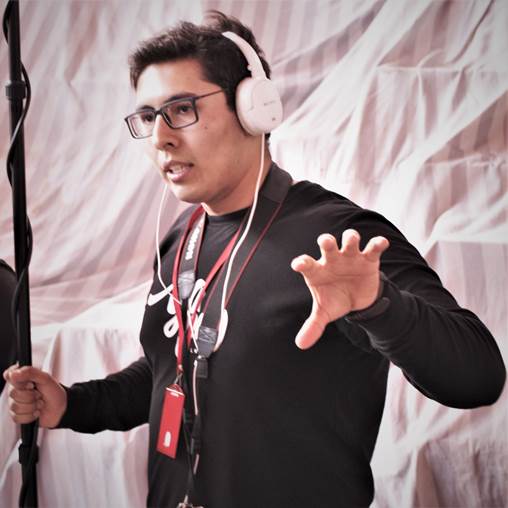
Walter Manrique Cervantes is a trained lawyer and works as an actor and theatre director. In 2017, Walter founded Yapa films, which is an audiovisual collective that seeks to promote cultural expression and art as well as defend human rights. He has directed short films such as, Hermanos, Coplas de Carnaval Loncco y Música Arequipeña. Walter has participated in various projects as a producer, sound designer, director of photography and cameraman. His short film, Aves Itinerantes, was selected in second place at the 48-Hour Film Project, in Arequipa. His documentary Mercado was selected for the 8th Film Festival in Cusco as well as for the 4th Semana del Cine en Lima. Currently, Walter is working on two documentary film projects as well as on his law thesis entitled, “A Legal Analysis of the Distribution and Display Market of Cinema in Peru”.
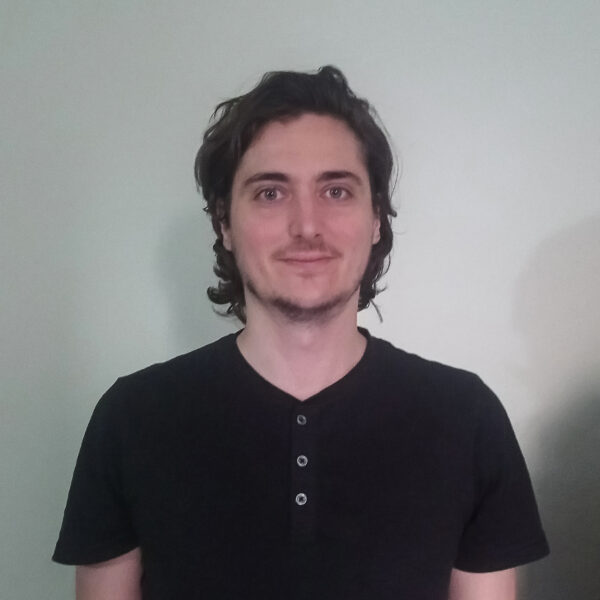
Marcelo Marques Miranda- BA in Archaeology and History, MA in Heritage Studies. Ph.D. Researcher, Faculty of Archaeology, Leiden University
https://leidenuni.academia.edu/MarceloMiranda
https://www.researchgate.net/profile/Marcelo_Marques_Miranda

Selina Martínez is a member of the Pascua Yaqui Tribe and Xicana born and raised in Phoenix, Arizona. She is currently an architect in training pursuing her architectural license. In 2020, Martinez was a recipient of the Radical Imagination grant from the NDN Collective, establishing the seed funding to create Juebenaria, a project focused on providing an evolving collection of a plurality of Yaqui lived experiences through digital media. Her project with SDCELAR examines questions of territorial identity, dispossession, community memory and storytelling, and design responses in Yaqui communities on both sides of the present-day US/Mexico border.
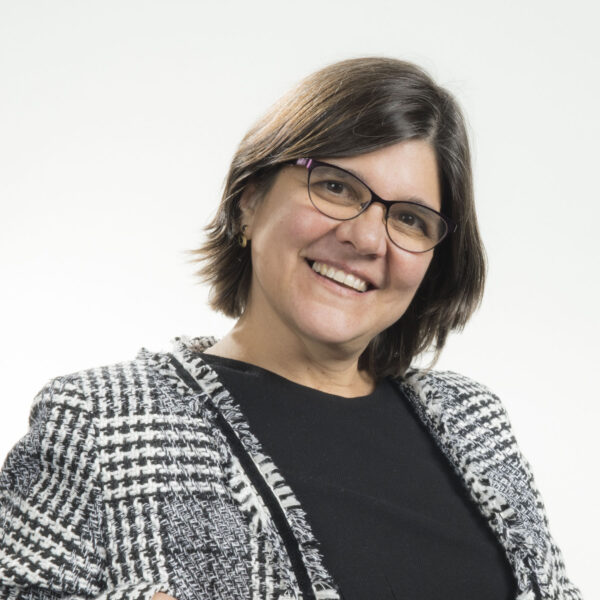
Luciana Martins is Professor of Latin American Visual Cultures at Birkbeck, University of London and Visiting Researcher at the Royal Botanic Gardens, Kew. Her books include O Rio de Janeiro dos Viajantes: O Olhar Britânico (2001), Tropical Visions in an Age of Empire (with F. Driver, 2005) and Photography and Documentary Film in the Making of Modern Brazil (2013). Principal Investigator on the AHRC-funded research project on Andean textiles, Weaving Communities of Practice, she is currently working on a monograph entitled Drawing Together: The Visual Archive of Expeditionary Travel, supported by the Leverhulme Trust.
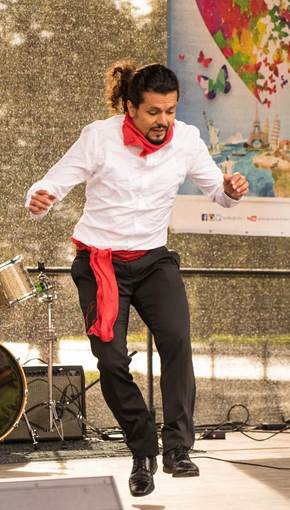
Juan Felipe Miranda is a multidisciplinary researcher and artist. He holds a doctorate in telecommunications, a musicology diploma, and a Masters degree in Knowledge, Practice and Inheritance related to Dance. This Masters degree was financed by the European Union. His thesis applied aspects of semiotic theory to the study of the Afro-Peruvian zapateo dance as it is practiced in Lima. Juan considers that research and artistic practice should go hand in hand. He is a member of the Decolonial Research Group at the University of Science and Technology in Norway. He is also a member of the study group, Multílogos, which promotes the reflexive study of dance, movement and the body. Juan is also part of various artistic projects: he is currently the only zapateo instructor in Arequipa, Peru. He was recently invited to participate in the LimaZap Festival 2019, which is the world’s largest zapateo festival. Juan has also worked as a musical theatre director for the play, La Cautiva and, alongside Cecilia Obregón, he is working on an adaptation of Sophocles’ Antigone. This production is set in contemporary Peru and combines theatre with traditional and popular music, as well as various dance genres.
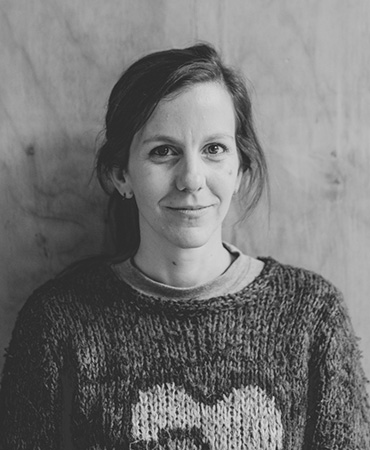
Elena Loson (Rosario, Argentina, 1980) lives and works in Santiago. She is a visual artist and content director for Nube Lab, a foundation dedicated to work in art and education. She has participated in exhibitions among which is worth mentioning Originales múltiples, Centro Cultural Recoleta,(Buenos Aires, 2019), Tú, yo y las cosas de este lugar, Sala de Arte CCU,(Santiago, 2019), Un muro más allá, Hache Galería,(Buenos Aires, 2018), Su aspecto es criminal, su corazón divino, Munar,(Buenos Aires, 2018), Imágenes de la distopia, Colección José Luis Lorenzo, (Córdoba, 2017), Lo firme en el centro encuentra correspondencia, Hache Galería,(Buenos Aires, 2017), Fondo-Fondo, Hache Galería, (Buenos Aires, 2016), among many others. Among other recognitions, she has the Magna Cum Laude award granted by the University of Palermo (2007), the Scholarship for Academic Excellence awarded twice by the Master of the Catholic University of Chile (2008-2009) and the Cruz de los Andes award granted by the Argentine Embassy in Chile, in recognition of the contribution in cultural integration between both countries (2011).

Lina Meruane (Chile, 1970) is the author of two short story collections, Las Infantas and Avidez, and five novels: Póstuma, Cercada, Fruta podrida, Sangre en el ojo and Sistema nervioso. Her non-fiction books include the essays Viajes virales and Zona ciega, as well as the personal essay Volverse Palestina, the lyrical essay Palestina, and the diatribe Against Children. She has received the Cálamo Prize (Spain, 2016), the Sor Juana Inés de la Cruz Prize (Mexico 2012), the Anna Seghers Prize (Berlin 2011) and writing grants from the Guggenheim Foundation (USA 2004), the NEA (USA 2010), the DAAD (Berlin 2017), and Casa Cien Años de Soledad (Mexico 2021), among others. She currently teaches at NYU Madrid.

Manuela Sáenz Zunino (Concepción, 1991) is a Strategic Designer from the Universidad Católica de Chile and a Master in Architectural Management and Design from the IE University of Spain. She divides her time between her two areas of study, on one hand, she works as Director of Operations of Inversiones Santa Marta, a company with projects related to the land (forestry, agriculture and real estate), participates in the board of directors of the La Tribuna newspaper and Radio San Cristóbal, provincial media of the Biobío region and, on the other hand, participates in Nube Lab, a foundation dedicated to work in art and education, contributing mainly to the area of Information and Communication Design.
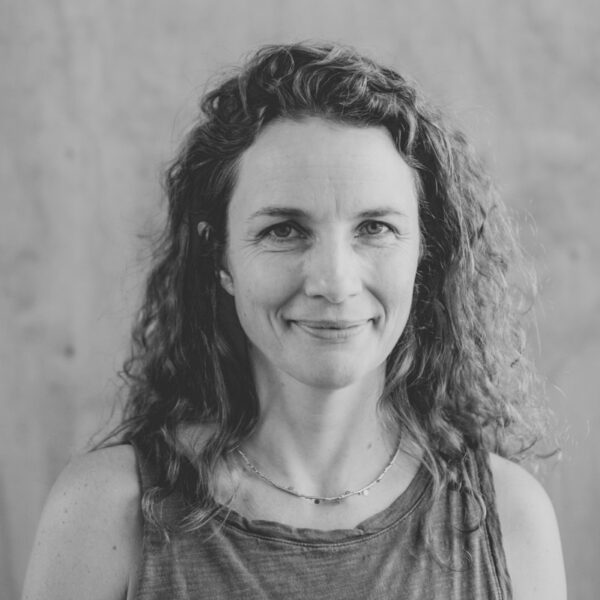
Paula de Solminihac (Santiago, 1974) is a visual artist, professor at the School of Art of the Universidad Católica de Chile and executive director of Nube Lab, a foundation dedicated to work in art and education. She has participated in exhibitions and biennials, among which are worth to mention the program Identidades en Tránsito de Fundación Rockefeller en el Museo del Barro (Asunción, 2000); la curatoría del Taller Artes del Barro para la Trienal de Chile(Santiago, 2010); la exposición colectiva Ceramix (Bonneffantenmuseum, Maastricht, 2015); la Bienal Internacional Revelationssobre artes y oficios (Grand Palais, París, 2017); la exposición individual Humus (Museo de Artes Visuales, MAVI, 2019) y en las residencias internacionales Territorios(Sierra de Santa Marta, 2015) y Lara(Galápagos, 2016). Her works are part of the collection of the Deutsche Bank Foundation (Geneva), the Misol Foundation (Bogotá) and the AMA Foundation (Santiago), the SPACE collection (California) and Lara (Singapore).
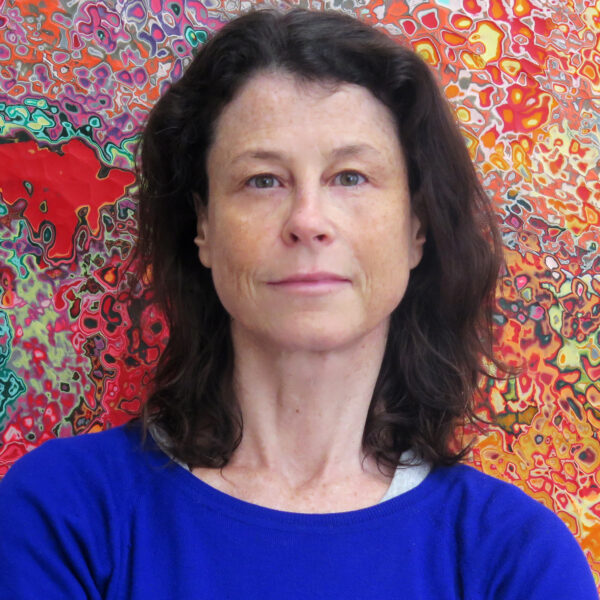
Magdalena Atria (Santiago, 1966) is a visual artist and professor at the School of Art of the Catholic University of Chile. Her work has been displayed in multiple group shows in Chile and abroad, among which are: XXI Bienal Paiz (Guatemala, 2019), XI Bienal de Cuenca (Ecuador, Cuenca, 2011), VI Bienal de Mercosur (Portoalegre, 2007), Inmersiones Estratégicas, CIFO Grants and Commissions (Centro Cultural Metropolitano, Quito, Ecuador, 2019), Tong: Haein Art Project (Templo Haeinsa, Corea del Sur, 2011), Tectonic Shift: Contemporary Art from Chile (Saatchi Gallery-Phillips de Pury & Company, Londres, UK, 2011), among many others. She has had individual exhibitions in Santiago, Madrid, Buenos Aires, Miami and New York. She has been curator of the Mangata samples (Taller La Roca, 2018), Lo que ha dejado huellas: Gabriela Mistral Gallery collection (Cerrillos Contemporary Art Center, 2017), Toronjil Cogollo (XS Gallery) and La Oscura Vida Radiante (Las Condes Contemporary Art Center, 2011). She has been awarded with the President of the Republic, Fulbright, Andes Foundation, FONDART and CIFO scholarships.
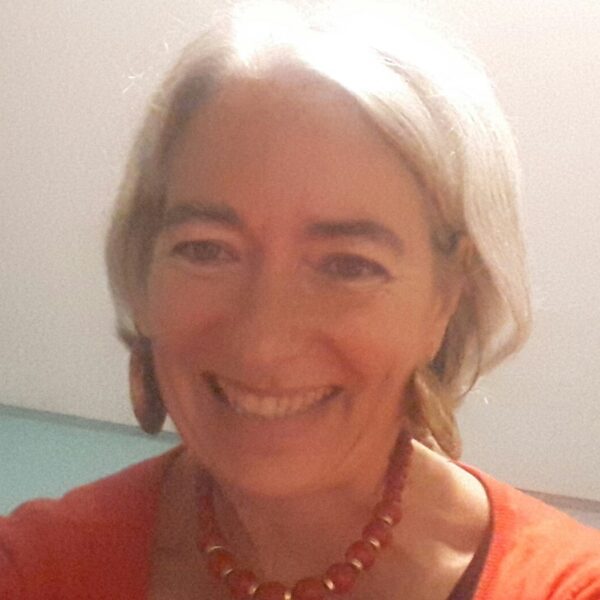
Alejandra Korstanje, is an archaeologist working at the Faculty of Natural Sciences and the Institute of Arqueología (Universidad Nacional de Tucumán, Argentina). She is also a Researcher of the CONICET. She has 30 years of experience working in the Bolson valley, where she leads the CIIVAC (Colectivo Interdisciplinario e Intercultural de los Valle Altos Catamarqueños). This is an interdisciplinary group of researchers from 5 different national universities (Tucuman, Catamarca, Jujuy, Cordoba, Buenos Aires), inter-culturally working with the community. This group was formed around the field of archaeology, but over the years has established collaborations with geosciences and environmental sciences, anthropology, communication, museography, and various ethnographies. From the beginning, the investigations have been performed in dialogue with the members of the community and local families, to the point that in many cases the local settlers actually work as researchers. One of the most outstanding and successful outcomes of this collaboration is the local Rural Community Museum at Barranca Larga.

Lana Gabriela Guimarães Melo is undertaking her BA in Archaeology at the Universidade Federal do Oeste do Pará, in Santarém, where she also acts as academic teaching monitor of indigenous and quilombola students. She is a Physics licentiate (2016) and with a specialization in Special needs and Inclusive Education (2017), previously obtaining a CAPES scholarship from the Institutional Program of Teaching Initiation, which has included teaching in local state schools. During this period, she began volunteering at the Archaeology at School project. This project will integrate Lana’s Independent Study Project, which is a prerequisite for obtaining her diploma in Archaeology.

Natalie A. De la Torre Salas is a research affiliate for the Santo Domingo Centre of Excellence for Latin American Research at the British Museum. She holds a Bachelor of Arts in Anthropology from the University of Puerto Rico – Rio Piedras and a Master of Arts in Public Archaeology from UCL’s Institute of Archaeology. Her work at the Centre consists of exploring Latin American Indigenous community’s positions regarding the digitization and dissemination of archaeological collections. Other projects include her dissertation about post-hurricane public engagement and lessons learned from Hurricane Maria in Puerto Rico. In the UK, she has worked alongside Waterloo Uncovered as a volunteer, a charity that uses archaeology for the rehabilitation of veterans. She is currently a Spanish academic tutor for the High School Equivalency Program (HEP) at the Inter American University of Puerto Rico, San German Campus.
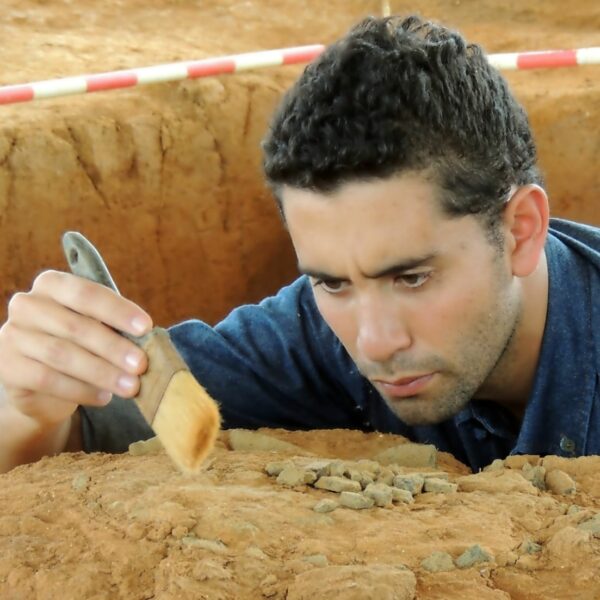
The Muysca indigenous protected area in Fonqueta y Cerca de Piedra is located in the western mountain of the town of Chia, county of Cundinamarca, in Colombia. The community has inhabited the protected area for centuries but, due to the impact generated by the Spanish contact and centuries of colonization, they have had to modify their traditional practices and adapt them to the realities of oppression and domination. Today, the community is in the middle of a process of revitalization of its indigenous identity. Jeronimo Jaramillo Socha is a member of the Muysca community in Fonqueta y Cerca de Piedra. He is an anthropologist and works in the field of archaeology, researching the cultural practices of the Muysca community from Chia since the year 2008. He is an active participant in local processes such as writing up of the Muysca Plan de Vida, researching the local population and mapping the physical structure of the protected area. He is also the director of the Fundacion Centro Colombiano de Arqueología y Patrimonio.
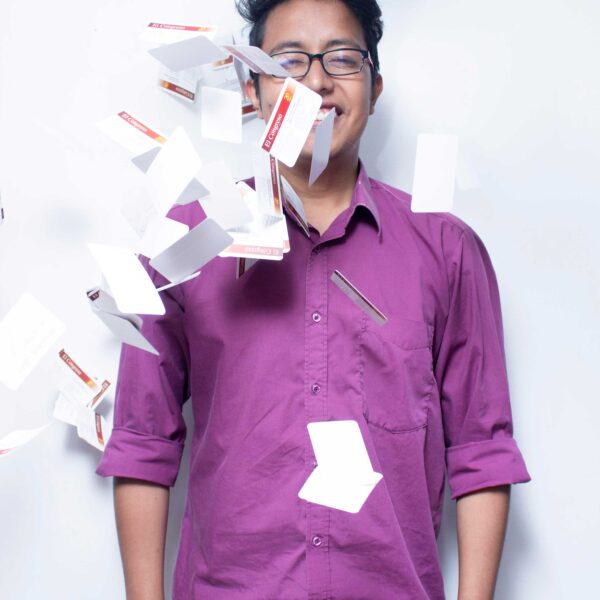
The Muisca Cabildo of Bosa, a community that rebuilds itself and grows stronger. We are a group of native families from the old Indigenous resgruardo of Bosa, a Muisca town south of the city go Bogota, in Colombia. We live in our ancestral lands, maintaining our roots and cultural traditions, holding our own governing system and following the current indigenous law. Mario Neuta Salamanca is a sociologist , member of the Muisca Cabildo of Bosa, founder of the In-Usual magazine and the In-Cubo: Corporation for Culture and Social Development. He has acted as leader of cultural events, art exhibitions and conferences both within and outside of his community, usually working with the youngest generations of Muisca people.

Dolores Reyes (Buenos Aires, 1978) studied Primary Teaching at Colegio Normal 10 and Greek and Classical Cultures with Victoria Juliá and Leandro Pinkler at the University of Buenos Aires. She worked on her first novel Cometierra with Selva Almada and Julian López. The novel was published in 2019 in Argentina and Spain by Editorial Sigilo and in Colombia by Rey Naranjo and was a finalist for the Medifé-Filba Foundation Novel Prize, the Silverio Cañada Memorial Prize, the Mario Vargas Llosa Prize and the Sara Gallardo National Novel Prize). Cometierra was translated and published into English as Eartheaters by Harper Collins, into Italian by Solferino, into French by Éditions de l´Observatoire, into Swedish through WordForlag, into Polish by Mova and is forthcoming in Dutch, Greek, Portuguese, Norwegian and Danish. Dolores Reyes currently teaches writing workshops and is writing a storybook and a sequel to Cometierra.

Djamila Ribeiro holds a degree in Philosophy and a Masters in Political Philosophy from the Federal University of São Paulo. Author of the books “Lugar de Fala” (Place of Speech), “Quem tem medo do Feminismo Negro?” (Who’s Afraid of Black Feminism?), “Pequeno manual antirracista” (Short anti-racist guide) and “Cartas para minha avó” (Letters to my grandmother), with translations into four languages. She is also a visiting professor at the department of journalism at the Pontifical Catholic University of São Paulo (PUC-SP) and currently a fellow at the Johannes Gutenberg University Mainz, Germany. Columnist for Folha de São Paulo newspaper and ELLE Brasil magazine, she was deputy secretary for Human Rights in São Paulo in 2016. She was awarded the 2019 Prince Claus Prize, granted by the Kingdom of the Netherlands and was considered by the BBC as one of the 100 most influential women in the world. In 2020, she won the Jabuti Prize, the most important in the Brazilian literary world, in the Human Sciences category, for Pequeno Manual Antirracista (Short anti-racist guide). In 2021, she was the first Brazilian to be honored by the BET Awards, given by the black community of the USA.

Cristina Rivera Garza (Matamoros, 1964) is an author, translator and critic. Her recent publications include El invencible verano de Liliana (PRH, 2021), Autobiografía del algodón (PRH, 2020). Her book Grieving: Dispatches from a Wounded Country, translated by Sarah Booker, was shortlisted for the NBCC award in 2021. Her New and Selected Stories forthcoming (Dorothy Project 2022). She became a MacArthur Fellow in 2020, and is the recipient of the International Donoso Literary Award 2021. Rivera Garza is Distinguished Professor and founder of the PhD Program in Creative Writing in Spanish at the University of Houston, Department of Hispanic Studies.
Ignacio Roca. Since 2006, he works with Indigenous communities from La Pampa. Roca is a Professor of Social Anthropology at the University of Buenos Aires (2010) as well as a teacher and researcher in the Faculty of Human Sciences at the National University of La Pampa. In addition, he received a master’s degree in Social and Cultural Studies from the same university in 2017. Roca was Director of Cultural Heritage in the Cultural Secretary of La Pampa between 2015 and 2020, the period in which he defined and lead the Project “Caminos de Agua”.

Damián Alcala has a bachelors degree in commerce (UADE). He is co-founder and CEO of the CamOnApp, a company of digital immersive technologies (AR/VR) applied to Science, culture, education, advertising and entertainment. CamOnApp is focused on Augmented Reality and Mixed Reality and offers technological solutions to agencies, media, and companies from distinct industries such as mass consumption, entertainment, tourism, retail, e-commerce, real estate, automotive, among others.

Mónica Berón is the principal investigator of the Conicet, Director of the Ethnographic Museum Juan Bautista Ambrosetti. She has a doctorate in Antropology (focused on archaeology) and is Profesor in the Faculty of Philosphy and Letters, UBA. Her research focuses on the archaeology of hunter-gatherers in the province of La Pampa, Argentina. She has published over 120 works on the subject in journals and as book chapters. Berón has published a book centered on the archaeological heritage of La Pampa (Berón y Curtoni 2002. Atlas Arqueológico de la Provincia de La Pampa) and compiled two others (López Mazz, J. y M. Berón Eds. 2014. Indicadores arqueológicos de violencia, guerra y conflicto en Sudamérica; y M. Berón, 2018. El sitio Chenque I. Un cementerio prehispánico en la Pampa Occidental. Estilo de vida e interacciones culturales de cazadores- recolectores del Cono Sur Americano). Berón directs projects based in various national institutions (UBA, ANPCyT, Conicet), as well as supervises fellows, doctoral students and researchers.
Florencia Paez is Profesor of Anthropology and Conicet Fellow within the team focused on the Archaeology of the Occidental Pampa. She develops research focused on the context of lithic artefacts from the SE of the La Pampa province.
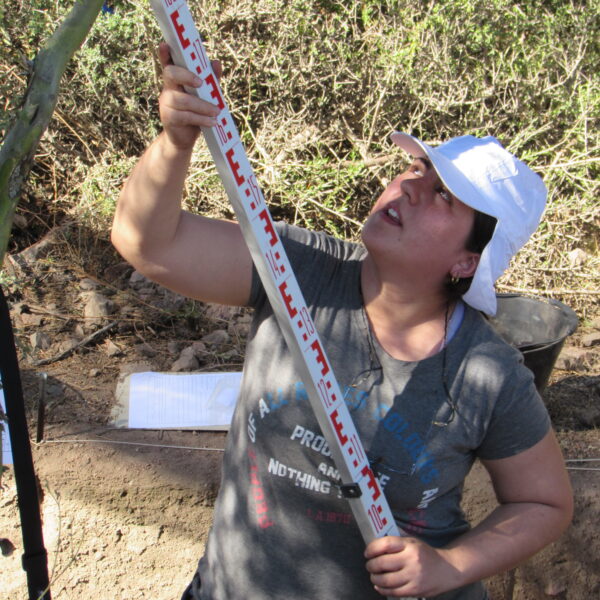
Eliana Lucero has a bachelors in Anthropology and is a Fellow at ANPCyT within the team focusing on the archaeology of the Occidental Pampa. She develops research focused on the bioarchaeological context of the south-central province of La Pampa.
Manuel Carrera Aizpitarte is a researcher at Conicet and has a doctorate in Anthropology from UNICEN. He develops research about hunter-gatherers within the team focused on the archaeology of the Occidental Pampa and the Sierras de San Luis. He is a teacher at UNICEN (Universidad Nacional del Centro d ela Provincia de Buenos Aires).
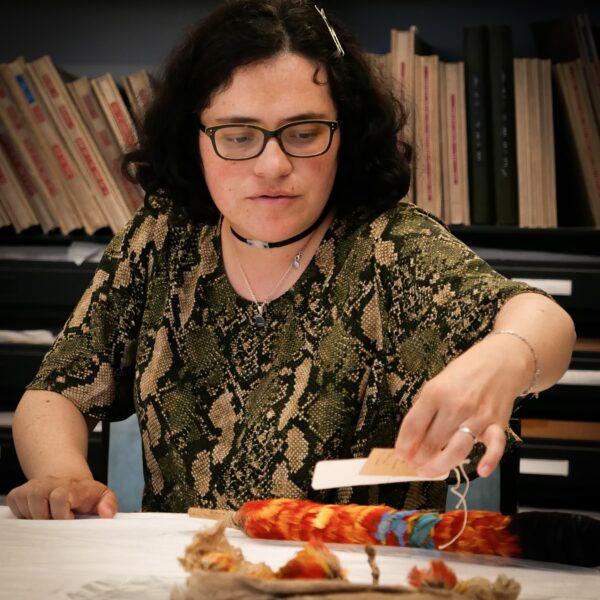
María Fernanda Esteban Palma (d. 2021). Colombian anthropologist and lawyer interested in exploring how contemporary communities produce and negotiate their culture using material culture, both past and present, as their medium. Also, she worked on the role of objects within ceremonial practice and how these “special” objects are managed by museums and other institutions such as universities and cultural centres. She worked extensively with Muisca indigenous groups from central Colombia. She held a law degree from the National University of Colombia, a Master of Arts in archaeology from the University of Exeter in the UK, and a Ph.D in anthropology from the University of Pennsylvania, in the US.

Velia Vidal (Bahía Solano, 1982) is a writer and journalist, lover of the sea and of shared readings. In 2021 she was a fellow at Villa Josepha Ahrenshoop, in Germany. Her book Aguas de Estuario (Laguna Libros, 2020) was the inaugural winner of the Afro-Colombian Authors Publication Grant awarded by Colombia’s Ministry of Culture. She is the co-author of Oír Somos Río (2019) and its bilingual German – Spanish edition (Grindwal Kollektiv, 2021). She published the children’s story Bajo el yarumo, as part of the Maletín de relatos pacíficos collection (Instituto Caro y Cuervo – Fondo Acción, 2017). She is the founder and director of the Motete Educational and Cultural Corporation and the Chocó Reading and Writing Festival (FLECHO). She graduated in Afro-Latin American Studies and has a Masters in the promotion of reading and Children’s Literature. Vidal also specialises in social management and communication.

Joseph Zárate (Lima, 1986) is a journalist and editor. He is the recipient of a 2018 Gabriel García Márquez Award, the 2016 Ortega y Gasset Award for Best Story or Journalistic Investigation and the PAGE 2015 National Award for Environmental Journalism. He has a Master in Literary Creation from Pompeu Fabra University in Barcelona and received the 2018 Ochberg Fellowship from the Dart Center for Journalism & Trauma at the Columbia University School of Journalism in New York. He is currently a professor of Literary Journalism at the Peruvian University of Applied Sciences. He is the author of Wars of the Interior (2018), which has been translated into English, Italian and Polish. In 2020 he won the 2020 National Journalism Prize and was nominated for the 2020/21 True Story Award for his long-form journalism about funeral workers in the Covid-19 pandemic in Peru.